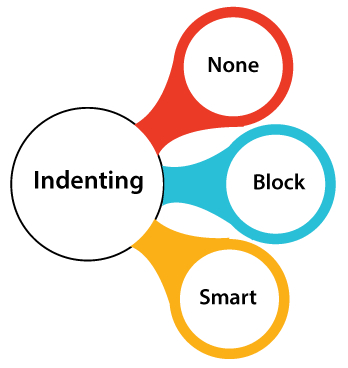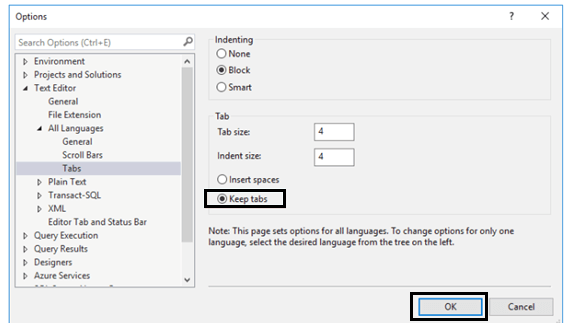SQL Tutorial
SQL Database
SQL Table
SQL Select
SQL Order By
SQL Insert
SQL Update
SQL Delete
Difference
SQL Injection
SQL String Functions
Miscl
- SQL Formatter
- SQL group by
- SQL add/drop/update column operation
- SQL CAST Function
- SQL Comments
- SQL CONCAT Function
- CTE (Common Table Expression)SQL
- How to use distinct in SQL?
- Joining Three or More Tables in SQL
- What is Web SQL?
- How to create functions in SQL?
- How to run SQL Script?
- How to Delete Duplicate Rows in SQL?
- Nth Highest salary
- 12 Codd's Rules
- SQL EXCEPT
- Types of SQL JOIN
- Change datatype of column in SQL
- SQL Auto Increment
- SQL Like
- Commit and Rollback in SQL
- SQL Concatenate
- SQL get month from the date
- Savepoint in SQL
- SQL ORDER BY DATE
- TIME Datatype in SQL
- SQL BETWEEN
- CRUD Operations in SQL
- SQL INDEX
- Scalar Functions in SQL
- SET Operators in SQL
- Types of SQL Commands
- TCL Commands in SQL
- SQL Subquery
- SQL View
- Constraints in SQL
- Pattern Matching in SQL
- SQL Date Functions
- DDL Commands in SQL
- DML Commands in SQL
- SQL CASE
- SQL Inner Join
- SQL IN Operator
- Check Constraint in SQL
- SQL CLAUSES
- SQL LOGICAL OPERATORS
- Delete Column from Table
- Add Column in the Table
- Delete one row in SQL
- Change the Column Value
- How to Add Foreign Key in SQL
- Add a Primary Key
- Insert One or More rows
- How to Use LIKE in SQL
- Cursor in SQL
- Difference Between DROP and Truncate
- SQL Comparison Operators
- SQL COUNT WHERE
- SQL SELECT MIN
- SQL Stored Procedure
- SQL SELECT AVG
- SQL SELECT MAX
- SQL ADD COLUMN
- How to use Auto-Increment in SQL
- SQL Languages
- SQL Arithmetic Operators
- How to Use GROUP BY in SQL
- How to Use ORDER BY in SQL
- Trigger in SQL
- What is Race Condition
- SQL COUNT DISTINCT
PL/SQL Tutorial
Sql Interview Question
SQl Quiz
SQL Formatter
The lengthy code becomes difficult to interpret. There is a large amount of unformatted SQL code while reading SQL scripts, which are difficult to reduce and understand. The Formatting options in SQL makes the work easier for us.
SQL Formatter
SQL Formatting is a slow process. Many formatting tools are used to speed up the formatting process.
The features of SQL Formatter are listed below:
- Code formatted by third-party users is easy to understand.
- The code troubleshooting and review process is more convenient and more efficient in SQL.
- The joint efforts are constructive in the development of projects, and is used for handling the projects from one team to another one.
Now consider the indentation of the code using the SQL Formatter, which is given below.
Indentation of code using SQL Formatter
There are three types of indentation used in the SQL server in this code. First is None, second is the Block, and the third one is Smart. These settings of indentation for individual text formats dispute with each other.


1. None: When we press the Enter key, the cursor moves to the starting of the next line, when the "None" option is selected from the indentation.

2. Block: When the block option is selected, press the Enter key. The cursor in the next row attaches to its first column.

3. SMART: SMART is the default indenting option in SQL, which automatically decides on indent styles. Next, we can define tab space to create an indentation.
Here is a sampling screenshot to determine the tab location in SQL Server using the SQL Server.

Features of Formatter
It is used to embellish SQL statements. The formatter formats the code naturally, and the functions are based on simple algorithms. The format and ornamental code are based on fundamental rules, which helps in writing SQL code.
It is recommended to use SQL Formatter to manage the code well, whenever the code is complex and deeply nested. It gradually adds new links to break the functional order into the visual blocks. Therefore, the SQL formatter modifies the functional depth of the statement by grouping the blocks.
- It enhance the statement, and a well-formatted SQL statement is used in the operations of the statement, which can be easily understood.
- SQL formatter is designed in a way to execute strict programming syntaxes quickly.
- SQL formatter is used to understand the horizontal space in a possible way.
- Formatter help us to maintain the visual alignment without using spaces of any width.
We are required to understand the core concept of the formatter.
The example is given below:
The query SELECT a FROM t, .There are many possible ways to read or edit the query.
SELECT a
FROM t
A
FROM
t
We have three possibilities to render the same query. So, this is the first method that is easier to understand and also takes less space. The above statement has four words. The words in the first option can be read easily.
If we enlarge the complexity of the query, what will happen?
For example, some filters, columns, subqueries, and different depth pairs can be added to the same query. As the query gains complexity, it justifies more space. Here, we have to add more rows of space, exposing subfields, and indenting other blocks. Set the indent width to 50 and consider the working of the query in the example below.
We are comparing Mongo DB and Dynamo DB below:
We have three result sets in the above example that are well intended. The query maintains a good understanding with a good balance of the available space. We have to use a simple query to focus on the output that can change with the complexity.
count(*) AS count,
winner,
counter * 50 * 6 AS counter
FROM
(
SELECT
winner,
round(length / (50 * 6)) AS counter
FROM
players
WHERE
build = $3
AND (hero = $4 OR region = $5)
)
GROUP BY
winner, counter
When we use the Formatter tools, a box is used to copy and paste the SQL code. SQL statements use a semicolon, which supports multiple statements that can be easily separated. The slider controls the maximum line width, which is needed in the characters used at the bottom of the box. The side control tab has many options, such as indentation, space, tab, alignment mode, etc.
The keyword "simplify" in the SQL formatter removes the undesired parenthesis or words with same meaning.
There are four alignments, which are given below.
1.full
2.partial
3.no
4.other
Implementation of SQL Formatter
SQL formatter working is based on an algorithm to show the documents in many formats. The most challenging part of SQL formatter is to parsing and converting text into memory data structures. Parsed data defines the final output, which can adapts easily. Generally, the Formatter calculates the results quickly based on possible placements for the new line.
It has text and indentation, or the combination of both. These operators are used in the correct order for proper functionality. We have to use some new operators to perform some extra functionality.


